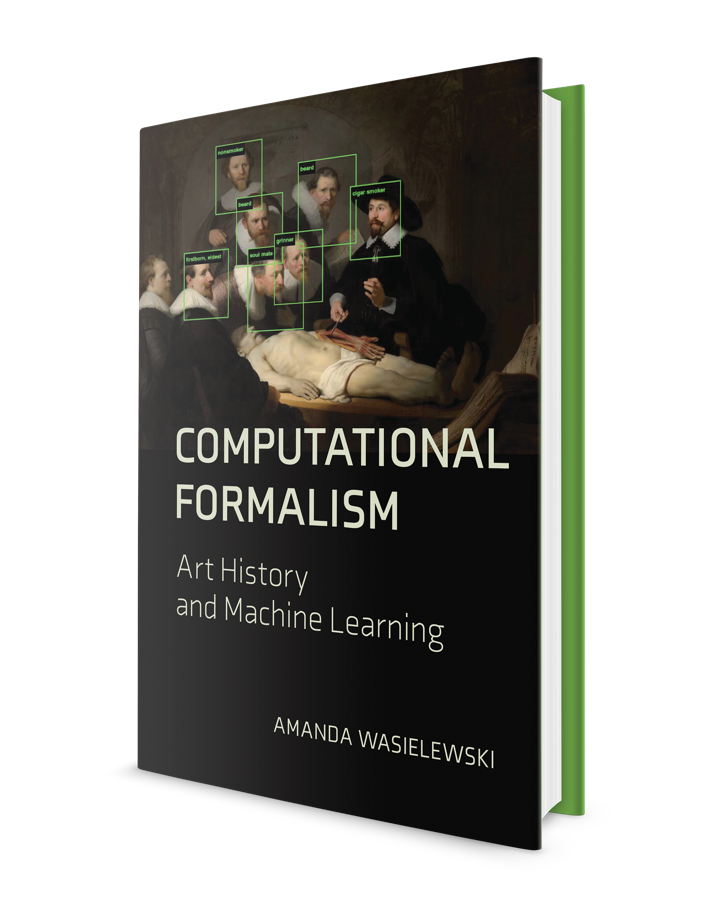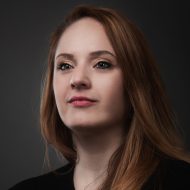AI & Visual Culture
I samband med utgivningen av den nya boken Computational Formalism: Art History and Machine Learning av Amanda Wasielewski hålls ett öppet seminarium om AI, konst och visuell kultur.

Användandet av artificiell intelligens (AI) för att skapa och analysera bilder har en enorm påverkan på såväl produktionen av konst och design som konst- och bildvetenskapliga studier. Vid denna release för monografin Computational Formalism: Art History and Machine Learning (MIT Press, 2023) deltar boken författare Amanda Wasielewskis samt två framträdande forskare som arbetar i gränslandet mellan datavetenskap och humaniora från Cambridge University och Universität Zürich. Samtida AI kan användas för automatiserad bildkategorisering, objektigenkänning, motividentifikation, och till och med att avslöja falska bilder. AI kan också användas, som t.ex. i verktyg som DALL-E eller Stable Diffusion, för att skapa nya bilder baserat på text. Detta seminarium handlar om de många olika sätt som AI används för bilder och hur det påverkar våra metoder för studiet av konst och bilder generellt. Hur kan vi förstå AI och dess användning, både inom den akademiska forskningen och inom konst- och designvärlden.
7 Juni 2023, kl. 16-18, Auditoriet, Institutionen för kultur och estetik, Stockholms universitet, Frescativägen 24E, NB
AI and Visual Culture
Event for the book launch of Computational Formalism: Art History and Machine Learning by Amanda Wasielewski
Artificial intelligence technologies for image creation and analysis are making a huge impact on art, design, and the study of art history and visual culture today. This book release event for Computational Formalism: Art History and Machine Learning (MIT Press) features talks by scholars engaged in research at the intersection of computer science and humanistic study. Contemporary AI applications can be used to automatically categorize images, identify objects or motifs in images, or even detect forgeries. They can also be used, in the case of tools like DALL-E or Stable Diffusion, to create new images based on simple input text. Covering a wide range of applications of AI in art and image studies, this event will address the question of how AI technology can affect our methods for interpreting artworks and images. How can we begin to understand AI and its use in both academic settings and the art/design world?
7 Juni 2023, 16:00-18:00, Auditorium, Department of Culture and Aesthetics, Stockholm University, Frescativägen 24E, NB
Program
| 16.05–16.35 | Introduction, Prof. Anna Näslund Dahlgren, IKE, Stockholms universitet |
| 16.05–16.35 | Computational Formalism: Art History and Machine Learning book presentation/bokpresentation Dr. Amanda Wasielewski, IKE, Stockholms universitet / Institutionen för ABM, Uppsala universitet |
| 16.40–17.10 | Critical Machine Vision and Art History Dr. Leonardo Impett, Cambridge Digital Humanities, Cambridge University |
| 17.15–17.45 | Towards Understanding the Canon of Latent Spaces Dr. Eva Cetinic, Digital Visual Studies, Universität Zürich |
| 17.50–18.15 | Questions, discussion and closing remarks |
Fritt och öppet för alla, Sprid gärna vidare i era nätverk
Free and open for all, Please pass this along to your network
More information:
Computational Formalism: Art History and Machine Learning
Though formalism is an essential tool for art historians, much recent art history has focused on the social and political aspects of art. But now art historians are adopting machine learning methods to develop new ways to analyze the purely visual in datasets of art images. Amanda Wasielewski uses the term “computational formalism” todescribe this use of machine learning and computer vision technique in art historical research. At the same time that art historians are analyzing art images in new ways, computer scientists are using art images for experiments in machine learning and computer vision. Their research, says Wasielewski, would be greatly enriched by the inclusion of humanistic issues.
Amanda Wasielewski is Associate Senior Lecturer of Digital Humanities and Associate Professor (Docent) of Art History at Uppsala University. Her writing and research investigate the use of digital technology in relation to art/visual culture and spatial practice. Her recent focus has been on the use of artificial intelligence techniques for the analysis and creation of art and other visual media. Wasielewski is the author of three monographs including Computational Formalism: Art History and Machine Learning (MIT Press, 2023).
Critical Machine Vision and Art History
Almost 30 years ago, Baxandall called for art historians to look to computer vision, not as a tool but as a ‘medium’ in which to model and conceptualise different ways of seeing. This talk will attempt to bring that thinking to the present day, as large visual AI models open both new avenues and new objects for research in visual culture.
Leonardo Impett is Assistant Professor in Digital Humanities at the University of Cambridge, having previously taught CS at Durham. He has a background in information engineering, and his work focuses on the intersections between computer vision and visual culture, including digital art history and critical AI.
Towards Understanding the Canon of Latent Spaces
Trained on millions of image-text pairs sampled from the Internet, large vision-language AI models encode in a numerical hyperdimensional feature space (i.e. latent space) numerous and complex associations which exist between data items collected at a certain point in time. However, which associations are “remembered” and which are “forgotten” – in other words, what constitutes the canon of the latent spaces of multimodal foundation models and how to systematically explore them, emerges as a new research challenge.
Eva Cetinić is a postdoctoral fellow at the Digital Society Initiative, University of Zurich, where she is conducting her research project “From Text to Image with AI: How Multimodal Deep Learning Impacts Art and Culture”. Her research interest is focused on exploring deep learning techniques for computational image understanding and multimodal learning in the context of visual art and culture.
